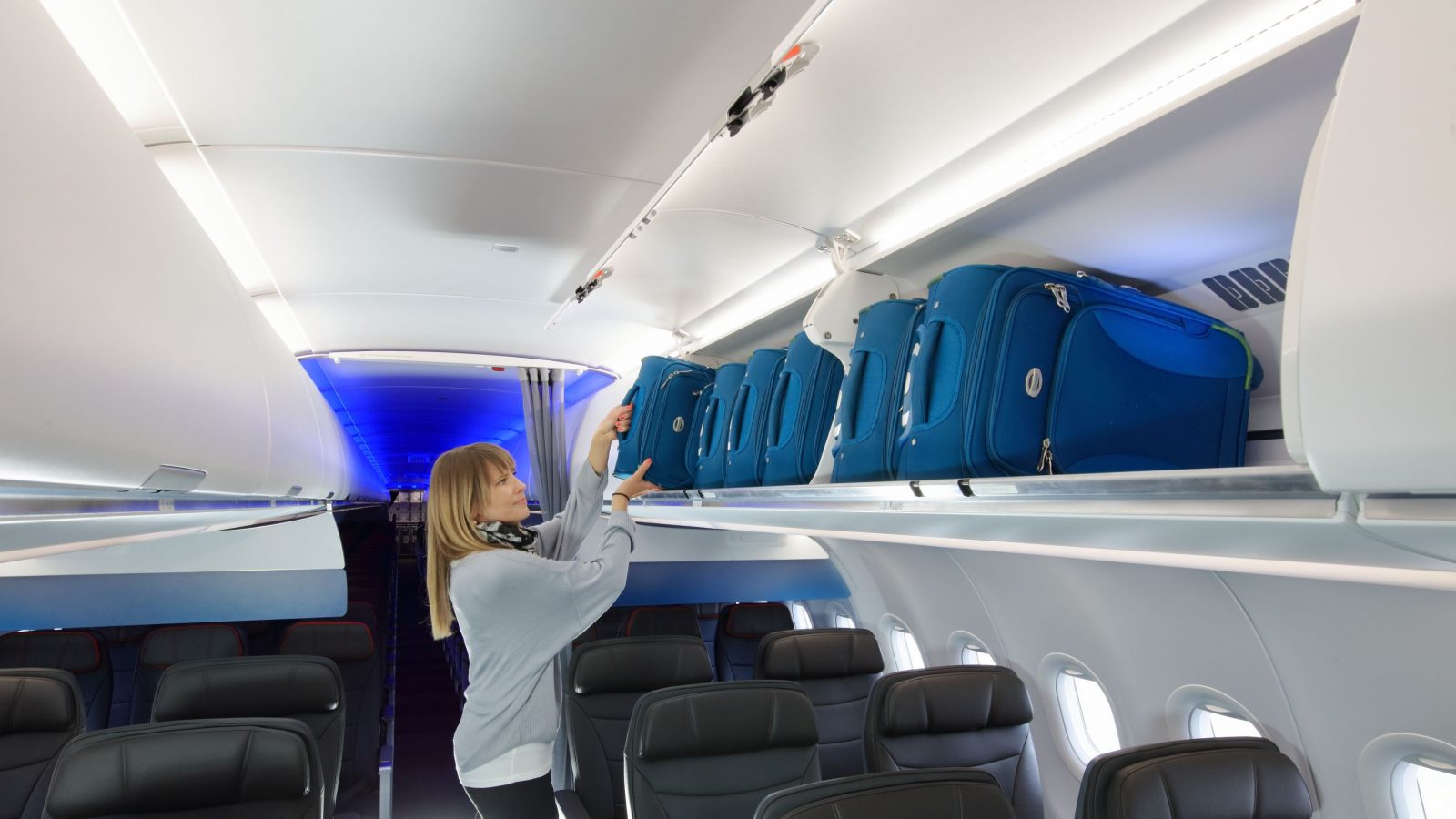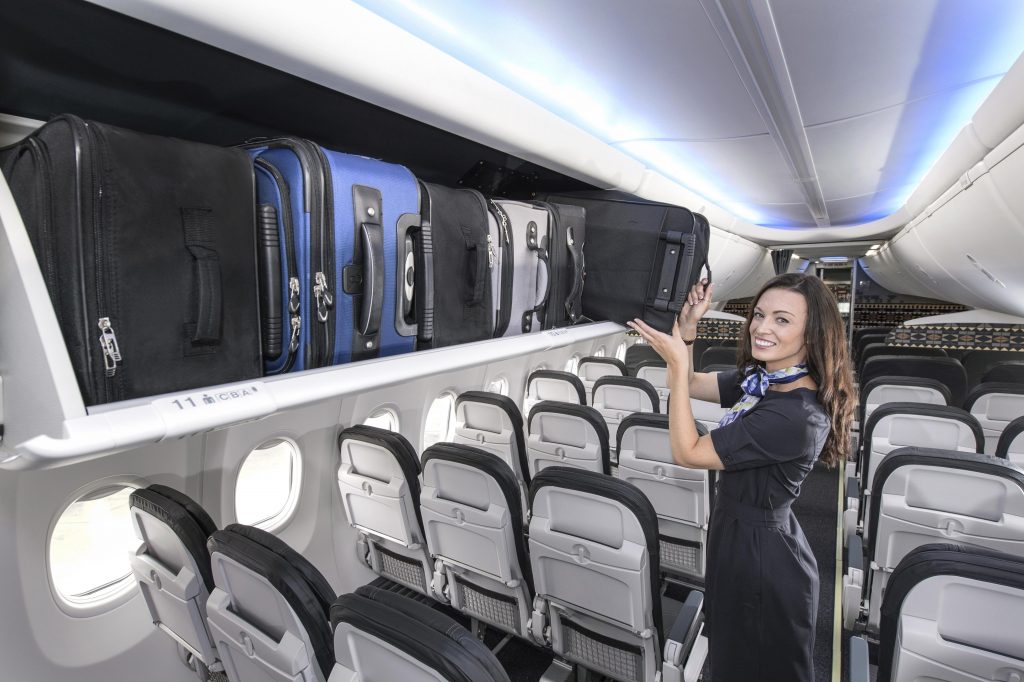
A recent post on the popular frequent flyer forum Flyertalk.com has generated a lot of debate – and it’s all to do with hand luggage and who can (or can’t) use the overhead bins. In this case, a passenger had brought just two small bags into the cabin on a recent United Airlines flight from San Francisco to Newark – a laptop bag and a purse. But with reduced space at her feet because of an entertainment box, the passenger decided it was perfectly reasonable to place her laptop bag into the overhead bin.
That decision by the passenger to make use of the overhead bin for her laptop bag is pretty much one that everyone can agree on – well, apart from a flight attendant working the flight. Near the end of boarding, the flight attendant was trying to find space for a large duffel bag that had been brought onboard. He plucked out our passenger’s laptop bag, threw it on her lap and told her that “overhead bins were reserved only for large items” as he tried to squeeze the larger bag into the space.
As it turned out, the flight attendant failed to make space for the duffel bag – instead, it had to be gate checked and the laptop bag was returned to the overhead locker. You might think that was the end of the matter but no, the flight attendant made the effort to return to our passenger and reprimanded her for placing a smaller bag in the bin, insisting they’re reserved for larger carry-on’s only.
So who’s right? If for example, an airline allows you two pieces of hand luggage, then surely you can place at least one of those items in the overhead bin – no matter how small it is? Heck, you might even want to place the smaller bag up there whilst you’re at it – and how about that purchase you just made in the Duty Free store, along with your large winter jacket, perhaps an umbrella and definitely that suit carrier you managed to sneak past the gate agent.
Okay, maybe that’s exaggerating things a little but you get my point. Boarding can be an incredibly stressful experience for both passengers and flight attendants – and all because everyone is vying for space for their belongings in the overhead lockers.
“We find that most often, that carry-on bags are one of the largest reasons for conflict onboard,” explained Sara Nelson, leader of the Association of Flight Attendants at a recent aviation conference in Denver.
Boy, is she right! As a serving flight attendant myself, I can tell you first hand that my colleagues and I find boarding a stressful experience. And what are you to do? Hold out for as long as possible in the vain hope that passengers will get along and sort out the Tetris like puzzle of fitting everyone’s bag in the bins themselves?
Or be proactive and manage the situation, fiercely guarding the bins so smaller items can’t sneak up there?
The airlines would like us to be proactive because getting everyone on board, sat down, strapped in and with luggage safely stowed as fast as physically possible is crucial for an on-time departure (and we all know how key that metric is). But that’s not something we’re so keen on because being proactive instantly get passengers backs up – it pits us against them and it sure looks ugly.
We can heap plenty of blame on the airlines for causing this problem in the first place. Squeezing more seats on the airplane means more people need to use the overhead lockers, while hand luggage only fares or charging for checked suitcases result in more passengers bringing larger rollaboards into the cabin with them.
At the same time, passengers are partly to blame – switching to purely value-based decision making when it comes to booking tickets means airlines have to compete on price. Which means ancillary fee’s like checked bags and hand-luggage only fares are here to stay.
It’s a vicious circle that’s resulted in a drastic rise in the amount of hand luggage passengers bring onboard with them. The problem is that the industry is only just catching up…
New overhead bins, like the Airspace XL bins fitted on the new fleet of Airbus A321’s for American Airlines, are 40% larger than the standard bins you’ll find on an A320-series airplane. Now, rollaboard’s can be placed on their side, creating room for four standard sized cases where only 2-3 would have traditionally fitted.

Boeing has a similar concept with its Sky Interior bins but I’m yet to see a single passenger use these bins in the manner that they’re intended. The industry has created a solution but no one seems to quite caught on…
Which brings us back to our first question? Who’s in the right – the passenger with her laptop bag or the flight attendant who said the overhead bins were reserved for larger bags only?
Well, both are right. Let me explain:
We’re only going to achieve that crucial on-time departure if everyone can quickly find room in the overhead bins for their bags. Yes, even those belonging to passengers who didn’t join the initial scrum for boarding – just because you got on the plane first doesn’t give you more of a right to overhead bin space than anyone else.
And the easiest way to achieve this is to reserve the overhead lockers for larger items only – at least, initially. Because once everyone is onboard by all means utilise every nook, and crevice left in those lockers to fit all those smaller bags and winter coats. That way, everyone is happy and we stand half a chance or leaving on time without upsetting half the people on the plane.
Interestingly, though, this is actually a problem that effects full-service airlines way more than their low-cost competitors. Nelson notes that her organisation has seen significantly fewer issues at airlines like Spirit and Frontier because fewer bags are allowed onboard. Meanwhile, low-cost European carrier Ryanair has one of the best on-time records in Europe – in part, because of its strict cabin baggage policy.
Maybe some airlines are being too generous?
Related
Mateusz Maszczynski honed his skills as an international flight attendant at the most prominent airline in the Middle East and has been flying ever since... most recently for a well known European airline. Matt is passionate about the aviation industry and has become an expert in passenger experience and human-centric stories. Always keeping an ear close to the ground, Matt's industry insights, analysis and news coverage is frequently relied upon by some of the biggest names in journalism.







